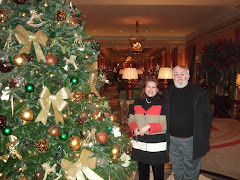The whole idea behind a portrait is: to be remembered. The faces I saw in this exhibition, date back from 1500 to the 1400's. In the years around 1400, the profile was seemingly the favoured format for portraits in the courts of Northern Europe, maybe to emulate the look of the profile portraits on medals and then later in Italy in particular where they became popular for much of the century. Antique portraits were employed as the tools of historical analysis-- image was allied to biography so that portraits came to stand for their virtuous ( and sometimes apalling ) behaviour, like Nero's image in a coin ! By employing a coin-derived profile formula for their own portraits, the pictures asserted similar virtue. This type of profile portrait paintings evokes not just ancient coins but classical bust portraiture.
The portraits were commissioned by the nobility, the church and the monarchs of the time but as the merchant classes later in the 1500's became affluent, they too were able to commission their own portraits depicting their trade. There was a painting called ' The Tailor At Work ' by Giovanni Battista Moroni where the tailor is shown with his scissors cutting the cloth as the tools of his work. He is portrayed wearing fine, sumptuous and expensive clothes like those of a prince, as the status he has reached in society has allowed him to be able to afford to commission his own painting as well.
Then, there was the painting of Andrea Odoni a member of the merchant classes. To some degree he was following fashion; he was not an aristocrat, he was trying to enhance his own status, Andrea Odoni was celebrated for creating a new Rome in Venice. He is shown extending his arm inviting us, to show us his art collection of fine ancient sculptures, where we can see the marble head of Hadrian and a torso of Venus in the foreground and he has enhanced this picture with sculptures which he doesn't own in the background of the painting. Some sculptures are chopped off, reminding us that even great art can crumble with the passage of time. With his left hand, in the middle of the painting, he is clutching a crucifix of Christ on his chest, near his heart which for him, is more prominent than the other sculptures all around him. The fragmented state of the sculptures represents the inevitability of death and the importance of memory. His evocation of human mortality is partly countered by the crucifix of Christ and the promise of eternal life.
Subscribe to:
Post Comments (Atom)
































































.jpg)
.jpg)










































1 comment:
Hola Maria
Yes, these paintings could have propaganda value, designed to show off the wealth, power, learning etc of the sitter.
I imagine this was very nice for the artists, for in a funny sort of way, the more they charged, the happier their customers would be, because they would have proved to the world that they could afford to pay the artists’ fees!
Robert
Post a Comment